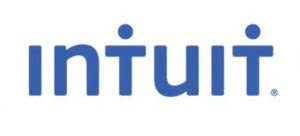
This reflects an increase in the company’s equity and cash or other asset balances. It represents the assets, liabilities, and stockholder’s equity at a particular point in time. It records the company’s income and expenditure and compares it with the previous year’s data, and results out the company’s net profit and loss. Preferred Stocks– When a person invests in the Preferred stocks, he or she is preferred over common stock investors in terms of getting dividends from the company. The downside of the preferred stock is that preferred stockholders do not have a right to vote.
- By dividing a company’s share price by its earnings per share, an investor can see the value of a stock in terms of how much the market is willing to pay for each dollar of earnings.
- Shareholders of common stock typically possess the right to participate in annual shareholders meetings and contribute toward the election of the company’s board of directors.
- The life of common stock goes through a few phases, and understanding each step is important for putting the common-stock-outstanding number into proper perspective.
- The net dilution equals the gross new shares in each tranche less the shares repurchased.
- EPS is a financial metric used to measure a company’s profitability on a per-share basis.
Balance Sheet

It is also a major component of calculating the price-to-earnings (P/E) ratio, where the E in P/E refers to EPS. By dividing a company’s share price by its earnings per share, an investor can see the value of a stock common stock outstanding formula in terms of how much the market is willing to pay for each dollar of earnings. Any stock dividends or splits that occur must be reflected in the calculation of the weighted average number of shares outstanding.
What are Outstanding Shares?
In general, higher EPS is better but one has to consider the number of shares outstanding, the potential for share dilution, and earnings trends over time. If a company misses or beats analysts’ consensus expectations for EPS, its shares can either crash or rally, respectively. When looking at EPS to make an investment or trading decision, be aware of some possible drawbacks.
Premium Investing Services
Sometimes, a company might report growing EPS, but the stock might decline in price if analysts were expecting an even higher number. Shareholders might be misled if the windfall is included in the numerator of the EPS equation, so it is excluded. Sometimes an adjustment to the numerator is required when calculating a fully diluted EPS.
The section will contain the EPS figures on a basic and diluted basis, as well as the share counts used to compute the EPS. When we were given the total Equity and Retained earnings, then by deducting retained earnings from the total Equity will provide us with the value of the common stock. An important aspect of EPS that is often ignored is the capital that is required to generate the earnings (net income) in the calculation.
Simply using the number of shares outstanding at the end of the reporting period might give a distorted picture of the company. Imagine a situation where the company exercises a share buyback at the end of the year. If that figure is taken and used to calculate EPS, then the EPS would be much higher and it would eventually amount to polishing the financial figures. The market capitalization, i.e. “equity value”, of a company following a stock split or reverse stock split should be neutral in theory. The net dilution comes out to be 30 million shares, which we’ll add to the weighted average shares outstanding of 150 million.
Assume that a state has authorized a corporation to issue 100,000 shares of common stock. The corporation has issued 20,000 of those shares to investors and received $2,000,000. Later, one of the common stockholders sells 1,000 of its shares back to the corporation for $150,000. The corporation decides to hold the 1,000 shares “in treasury” instead of retiring the shares.
- The P/E ratio is one of the most common ratios utilized by investors to determine whether a company’s stock price is valued properly relative to its earnings.
- Moreover, the number of shares outstanding is extremely useful when monitoring how a company conducts its business, as things like stock splits also affect share numbers.
- Outstanding shares decrease if the company buys back its shares under a share repurchase program.
- When we were given the total Equity and Retained earnings, then by deducting retained earnings from the total Equity will provide us with the value of the common stock.
- In this way, the number of both issued and outstanding shares is reduced.
- Market capitalization — share price times number of shares outstanding — and EPS are both computed using a company’s number of outstanding shares.
For instance, if the company’s net income was increased based on a one-time sale of a building, the analyst might deduct the proceeds from that sale, thereby reducing net income. If you have an interest in stock trading or investing, your next step is to choose a broker that works for your investment style. Since EPS is just one possible metric to use to examine companies’ financial prospects, it’s essential to use it in conjunction with other performance measures before making any investment decisions. A recent example of a reverse stock split is General Electric’s (GE) 1-for-8 reverse stock split during the summer of 2021. These statements are available on companies’ investor relations pages or the SEC website.

Net income is the income available to all shareholders after a company’s costs and expenses are accounted for. Outstanding shares differ from treasury shares, which are the shares held by the company itself and which cannot be sold in the open market. Treasury shares plus outstanding shares together form the total number of issued shares.

Regardless of its historical EPS, investors are willing to pay more for a stock if it is expected to grow or outperform its peers. In a bull market, it is normal for the stocks with the highest P/E ratios in a stock index to outperform the average of the other stocks in the index. Net income is the amount related to shareholder equity after costs and expenses have been deducted from a company’s income. Most P/E ratios are calculated using the trailing EPS because it represents what actually happened, and not what might be.
